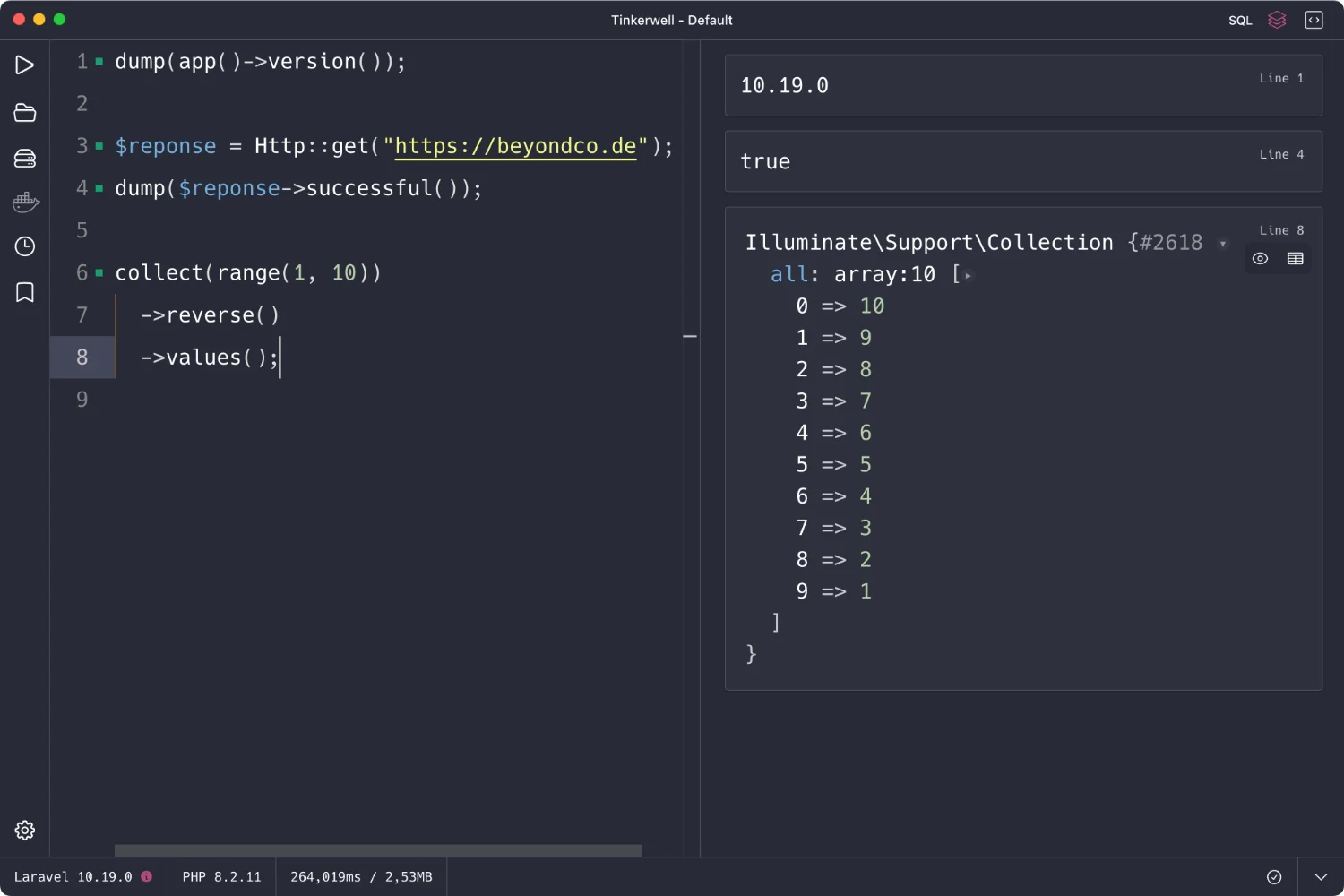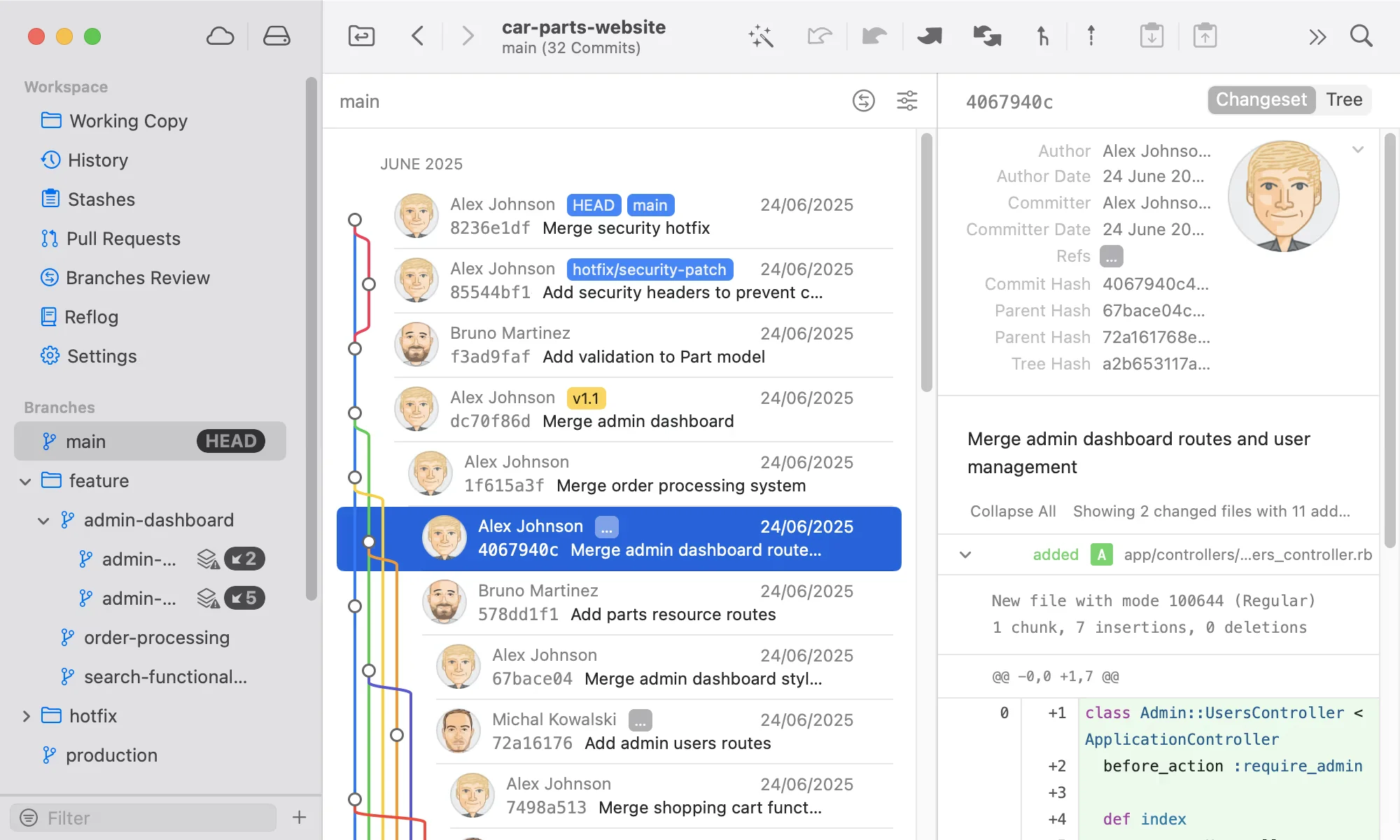
11 minutes read
Enums in PHP: a guide to safer coding
Table of contents
- → Introduction
- → A brief history of Enums in PHP
- → Understanding the basics of Enums in PHP
- → Pure Enums VS. backed Enums
- → Listing Enum values
- → A deep dive into PHP Enums and their comparison with classes
- → Working with enum methods
- → Enums can use Traits and implement Interfaces
- → What about Enums in PHP 7 or even PHP 5?
Introduction
As a developer, you must have come across situations where a variable could only take one out of a small set of possible values. For instance, a variable holding a user’s status might only have the possibilities “Active”, “Inactive”, or “Suspended”. You could represent these states using separate boolean variables or assign them specific string or integer values, but that’s where things start getting messy and error-prone.
Wouldn’t it be nice to have a way of declaring this restricted set of possible values in a clear, self-documenting manner? That’s exactly where Enumerations, or Enums, as they are often called, come to the rescue.
Enumerations have been part of many programming languages for years and I was so envious! They allow you to define a type that is restricted to a specific set of values, enhancing both clarity and safety. For PHP developers, the great news is that as of PHP 8.1, Enums are now part of the PHP core. Yes, you heard it right! PHP now provides built-in support for Enums. 🎉
A brief history of Enums in PHP
Before PHP 8.1
PHP did not have built-in support for Enums. While this lack of Enums did not prevent developers from writing code, it did mean that PHP lacked a tool found in many other languages that can make coding safer and more efficient.
Without built-in Enums, developers had to use other constructs to represent a set of possible values, often resorting to class constants, arrays, or sometimes just strings or integers.
However, this could lead to potential errors and often resulted in code that was not as clear as it could be.
PHP 8.1
The introduction of Enums in PHP 8.1 has been a significant addition to the language.
PHP’s implementation of Enums is more powerful than many other languages, as Enums in PHP are not merely integer or string values under the hood.
In PHP, an Enum is a special kind of object, with cases of the Enum being single-instance objects of that class.
This means you can use Enums anywhere you could use an object, making them extremely versatile.
The addition of Enums to PHP signifies the language’s ongoing evolution to incorporate more modern programming concepts and paradigms, increasing its efficiency, and enabling developers to write safer and cleaner code.
Understanding the basics of Enums in PHP
To unravel the basics of Enums in PHP, I decided to use the magical world of Harry Potter.
Imagine we’re coding for the Hogwarts School of Witchcraft and Wizardry, where each new student must be sorted into a house by the virtual Sorting Hat.
At Hogwarts, there are only four houses: Gryffindor, Hufflepuff, Ravenclaw, and Slytherin.
So, we could represent this as an Enum in PHP.
Here’s how you declare an Enum:
<?php enum House { case Gryffindor; case Hufflepuff; case Ravenclaw; case Slytherin; }
In this example, we have created an Enum named House, which can have four possible values - Gryffindor, Hufflepuff, Ravenclaw, and Slytherin.
Let’s create a Student class, where each student holds a $house property.
class Student { public ?House $house = null; }
We also have a SortingHat class with a sort method.
This method either accepts a house suggestion or randomly assigns a house to the student.
Just like in Harry Potter, the Sorting Hat took Harry’s choice into consideration!
class SortingHat { public function sort(Student $student, ?House $suggestedHouse = null) { if ($suggestedHouse) { $student->house = $suggestedHouse; return; } $houses = [ House::Gryffindor, House::Hufflepuff, House::Ravenclaw, House::Slytherin, ]; $index = array_rand($houses); $student->house = $houses[$index]; } }
As you can see, we’ve limited the values of the $suggestedHouse variable and $house property to only be one of the four Hogwarts houses using the House Enum.
If you were to try to sort a student into a non-existent house, PHP will catch this, and it wouldn’t run.
That’s the magic of Enums!
In this scenario, the Hogwarts houses with no associated data are called “Pure Cases,” and an Enum that contains only Pure Cases, like our House Enum, is referred to as a “Pure Enum.”
Pure Enums VS. backed Enums
Backed Enums are Enums backed with a scalar value. That’s why they are considered “not pure.”
For a reminder, a scalar value in PHP is either of type bool, float, int or string.
Code speaks more than words sometimes, so here’s a Backed Enum:
<?php enum House: string { case Gryffindor = 'Gryffindor'; case Hufflepuff = 'Hufflepuff'; case Ravenclaw = 'Ravenclaw'; case Slytherin = 'Slytherin'; }
As you can see, we defined the type that backs the Enum (string in that case) and we assign a value to each case. Couldn’t be simpler than that. But why would you use Backed Enums?
Here’s a great use case:
// Let's pretend we fetched this value from the database. $house = 'Gryffindor'; $student = new Student( House::from($house) ); // object(Student)#1 (1) { // ["house"]=> // enum(House::Gryffindor) // } var_dump($student);
In this example:
- We pretend we fetched data from a database and we try to create a new
Studentobject. - We initialize the
$houseproperty with theHouse::from()static method from a string value (sinceHouseis now a backed enum of typestring). - If this fails, an exception is throw. (
Uncaught ValueError: "Foo" is not a valid backing value for enum "House")
In some cases, instead of throwing an exception, you might want to fall back on a default value. Here’s how you can do that with the House::tryFrom() static method, which returns null in case of failure.
$student = new Student( House::tryFrom('Slytherin') ?? House::Gryffindor );
Listing Enum values
You saw in the previous example that without a suggestion from the student, a house is randomly assigned.
What bothers me in the example I provided, though, is that we manually listed the possible values of the House Enum to build our array.
Fortunately, Enums all have a cases() method that can make our code more flexible!
class SortingHat { public function sort(Student $student, ?House $suggestedHouse = null) { if ($suggestedHouse) { $student->house = $suggestedHouse; return; } $houses = [ House::Gryffindor, House::Hufflepuff, House::Ravenclaw, House::Slytherin, ]; $houses = House::cases(); $index = array_rand($houses); $student->house = $houses[$index]; } }
Pretty neat, right?
A deep dive into PHP Enums and their comparison with classes
In our journey with PHP Enums so far, you might have noticed that they are similar to classes.
They can be namespaced, implement interfaces, use traits, and they are also autoloadable in the same way.
But, of course, there are also some significant differences between PHP classes and Enums.
Let’s revisit our magical Harry Potter example to understand these differences.
When a student is sorted into a house by the Sorting Hat, we know that the house will always be one of the four predefined options - Gryffindor, Hufflepuff, Ravenclaw, or Slytherin.
There are no other possibilities in the context of Hogwarts. This scenario is perfect for Enums.
An Enum, like House, is a unique data type that comprises a set of predefined constants.
It signifies that a variable can have only one of these predefined constants and nothing else.
For example, the $house property of the Student class can only hold one of the four house options defined in the House Enum.
class Student { public ?House $house = null; }
In contrast, classes in PHP, like our Student class, can hold a variety of different properties and can be instantiated multiple times with different property values.
Enums, on the other hand, cannot be instantiated and are used to define a fixed, limited set of instances.
Another difference is in the way we compare classes and Enums.
In PHP, Enums are compared by their identity, not by their values.
Let’s take a look at an example:
$a = House::Gryffindor; $b = House::Gryffindor; var_dump($a === $b); // bool(true)
In this example, $a and $b are the same House Enum instance, so $a === $b is true.
Comparisons using less than < or greater than > operators are not meaningful for Enum objects and will always return false.
Enum cases in PHP have a special property called name, which is the case-sensitive name of the case itself. This can be useful when you want to print the name of the Enum case.
echo House::Gryffindor->name; // Prints "Gryffindor".
Working with enum methods
Now that we’ve explored how Enums can be compared and their differences from classes, it’s time to dive deeper and explore enumeration methods in PHP Enums.
Just like classes, Enums in PHP can contain methods.
Let’s see how we can utilize this feature using our Harry Potter sorting scenario.
enum House { case Gryffindor; case Hufflepuff; case Ravenclaw; case Slytherin; public function getHouseColors() : array { return match($this) { House::Gryffindor => ['Red', 'Gold'], House::Hufflepuff => ['Yellow', 'Black'], House::Ravenclaw => ['Blue', 'Bronze'], House::Slytherin => ['Green', 'Silver'], }; } } // array(2) { // [0]=> // string(3) "Red" // [1]=> // string(4) "Gold" // } var_dump(House::Gryffindor->getHouseColors());
In the magical world of Hogwarts, every house has its colors. In our example above, we’ve added a getHouseColor() method to our House Enum to return the color of each house.
When a method is defined within an Enum, the $this variable is defined and refers to the case instance.
Enums can use Traits and implement Interfaces
Like classes, Enums can use Traits. This is great when there are a lot of methods and you need to split them across multiple files to keep your code tidier.
There are some restrictions, though:
- You can’t have properties.
- You can’t override Enums methods (like
cases()).
trait Colors { public function getHouseColors() : array { return match($this) { House::Gryffindor => ['Red', 'Gold'], House::Hufflepuff => ['Yellow', 'Black'], House::Ravenclaw => ['Blue', 'Bronze'], House::Slytherin => ['Green', 'Silver'], }; } } enum House { use Colors; case Gryffindor; case Hufflepuff; case Ravenclaw; case Slytherin; }
Like like Traits in Classes, Interfaces can also be implemented into Enums. It’s difficult to find a concrete example for this use case, but here you go anyway:
interface HasColors { public function getHouseColors() : array; } enum House implements HasColors { case Gryffindor; case Hufflepuff; case Ravenclaw; case Slytherin; public function getHouseColors() : array { return match($this) { House::Gryffindor => ['Red', 'Gold'], House::Hufflepuff => ['Yellow', 'Black'], House::Ravenclaw => ['Blue', 'Bronze'], House::Slytherin => ['Green', 'Silver'], }; } }
What about Enums in PHP 7 or even PHP 5?
Before the introduction of native Enumerations in PHP 8.1, enums were typically handled in PHP in a few different ways, none of which were particularly elegant or reliable. Here are some of the common strategies:
- Class constants: Perhaps the most common way of implementing enums was through class constants. Here’s an example:
class House { const Gryffindor = 'Gryffindor'; const Hufflepuff = 'Hufflepuff'; const Ravenclaw = 'Ravenclaw'; const Slytherin = 'Slytherin'; }
In this way, you could refer to an enum value with House::Gryffindor, for instance. This approach provides a way to group related constants, but doesn’t provide any of the type safety or functionality that true enums might offer (because class constants cannot be typed and marked as readonly).
- Arrays: Another common way was to use arrays to hold possible values.
$houses = [ 'Gryffindor', 'Hufflepuff', 'Ravenclaw', 'Slytherin', ];
However, this method also lacks the benefits of true Enums such as type safety and autocompletion.
- SplEnum: PHP used to have a built-in SplEnum class, which was a part of the Standard PHP Library (SPL). However, it was not widely adopted due to its performance issues and it required the SPL Types extension which was not bundled with PHP and was considered experimental.
class House extends SplEnum { const Gryffindor = 'Gryffindor'; const Hufflepuff = 'Hufflepuff'; const Ravenclaw = 'Ravenclaw'; const Slytherin = 'Slytherin'; }
This class was removed in PHP 7.0, so it’s not used anymore.
- Third-party packages: There are also several packages that provide enum functionality, such as myclabs/php-enum. These often provide more features than simple class constants or arrays, such as methods for listing all possible values, converting to/from strings, etc.
use MyCLabs\Enum\Enum; class House extends Enum { const Gryffindor = 'Gryffindor'; const Hufflepuff = 'Hufflepuff'; const Ravenclaw = 'Ravenclaw'; const Slytherin = 'Slytherin'; }
Despite these workarounds, none of them could provide the full set of features that true Enumerations can offer, such as type safety and functionality like getting all possible values.
This is why the addition of native Enumerations in PHP 8.1 was such an important upgrade for the language.
Did you like this article? Then, keep learning:
- Learn about PHP 8.4's upcoming features for more PHP knowledge
- Discover best PHP packages to enhance your projects in 2024
- Explore PHP 8.3's new Override attribute to express intent clearly
- Stay updated on PHP 8.3's new features and changes
- Understand PHP 7 vs PHP 8 and how enums improve PHP coding
- Understand PHP's useful array manipulation with array_map()
- Explore the most useful PHP functions for array sorting
- Use PHP's try & catch blocks to handle exceptions gracefully
- Debug your PHP arrays effectively with helpful printing methods
- Simplify PHP code using the null coalescing operator








7 comments
Thanks for helping me to understand Enums. I have found that in the "interface" example, you can use backed enums this way: enum House : string implements HasColors
Great article ! I use Enum and I wanted to know how do you unit test an Enum itself and use in a class ?
Thanks! I think the best way to unit test your enum is to ask yourself first: why and what needs to be tested? Because only you can answer this.
Like classes, Enums can use Traits. This is great when there are a lot of methods and you when to split them across multiple files to keep your code tidier.
There is a typo in that sentence. You may delete my comment it's just to inform you.
Article fixed, thank you! Comments are there for that, no need to delete. 🙂
Hi, thank you for your article. Is there any difference between
$student = new Student(House::from($house, House::Gryffindor));
and
$student = new Student(House::tryFrom('Slytherin') ?? House::Gryffindor);
?
Thanks !
Yep! As mentioned in the article,
tryFromwon't throw an exception. It'll returnnullso you can, for instance, fall back on a value.